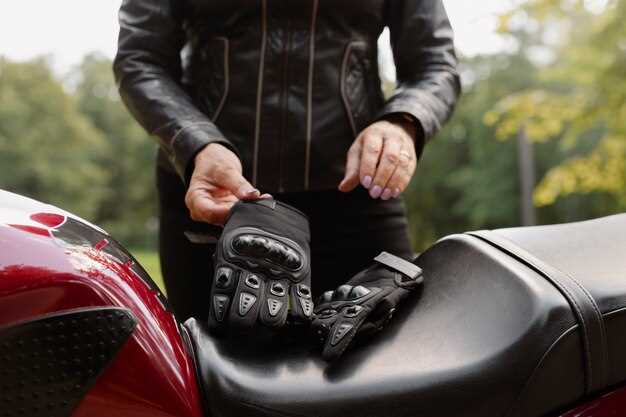

When it comes to motorcycle riding, safety and comfort are paramount. One of the crucial components of a rider’s gear is a good pair of motorcycle gloves. These gloves not only protect your hands from the elements and potential injuries but also enhance your control over the bike. However, with a myriad of options available, selecting the right gloves can be a daunting task.
It’s essential to consider various factors such as material, fit, and protection features. Leather gloves, known for their durability and abrasion resistance, are highly favored by many riders. On the other hand, textile gloves often provide better breathability and flexibility, making them suitable for warmer weather or long rides. Your personal riding style, whether it’s commuting, touring, or off-road adventures, also influences the type of gloves you should choose.
Comfort is another critical aspect to keep in mind. A snug fit without being overly tight will allow for better dexterity and control of the bike’s controls. Additionally, features like padded palms, reinforced knuckles, and wrist closures add an extra layer of protection and comfort. By understanding these elements, riders can make an informed decision that prioritizes both safety and comfort on the road.
Understanding Different Types of Motorcycle Gloves and Their Features
Motorcycle gloves come in various types, each designed to meet specific riding needs and preferences. Understanding these types will help riders choose the right pair for both safety and comfort.
One common type is the sport gloves, which typically feature a snug fit and lightweight materials. They are designed for maximum dexterity while providing ample protection through reinforced knuckles and palms. Sport gloves often incorporate leather and textile materials, ensuring durability without sacrificing comfort.
Touring gloves, on the other hand, are crafted for long-distance rides. These gloves are usually more padded and offer weatherproof features. Many touring models include additional insulation for colder weather, as well as touchscreen compatibility for ease of use while navigating or using devices.
Off-road gloves are specifically designed for dirt biking and other off-road activities. They prioritize breathability and grip while sacrificing some level of armor found in other styles. Made from lightweight materials, they often have a mesh construction to enhance airflow, keeping hands cool during rigorous rides.
Cruiser gloves offer a balance between style and protection. Designed with a relaxed fit, they often feature classic leather aesthetics. The emphasis is on comfort, with many models incorporating padding for vibrations and enhanced grip for a more relaxed riding position.
Cold weather gloves are essential for riding in low temperatures. These gloves usually have waterproof and insulated linings to retain warmth while keeping hands dry. Look for models with extended cuffs to prevent cold air from entering the sleeve area.
Lastly, fingersless gloves cater to riders who prioritize ventilation and dexterity in warmer climates. While they provide minimal protection, they are favored in casual riding situations or for those who want a better feel for the controls.
When choosing motorcycle gloves, consider the riding style, weather conditions, and comfort preferences to ensure a safe and enjoyable riding experience.
Key Materials for Motorcycle Gloves and Their Impact on Comfort

When selecting motorcycle gloves, the choice of materials significantly affects both comfort and safety. Understanding these materials allows riders to make informed decisions tailored to their specific needs.
Leather is a traditional material for motorcycle gloves due to its durability and natural abrasion resistance. High-quality leather, such as cowhide or kangaroo, provides excellent protection while conforming to the shape of the hand over time. The comfort level increases as the leather breaks in, offering a tailored fit that many riders prefer.
Synthetic fabrics, including nylon and polyester, have gained popularity in modern glove designs. These materials are often lighter than leather and can be more breathable, enhancing comfort during long rides. Additionally, some synthetic gloves incorporate moisture-wicking properties, keeping hands dry and comfortable in humid conditions.
Mesh is another effective option for warm-weather riding. Gloves made with mesh panels allow for maximum airflow, reducing heat buildup and ensuring comfort on hot days. However, while mesh enhances ventilation, it may compromise protection, so it’s essential to balance comfort with safety.
Padding and liners also play a crucial role in comfort. Gloves with foam or gel padding can absorb shocks and reduce hand fatigue on long journeys. Furthermore, insulated liners can provide warmth in colder climates, ensuring that riders maintain dexterity without sacrificing comfort.
Finally, reinforcements made from Kevlar or other advanced materials increase the gloves’ protective capabilities. These reinforcements can add some stiffness, but modern designs often integrate them in a way that does not impede comfort, resulting in gloves that provide both safety and ease of movement.
In conclusion, the materials utilized in motorcycle gloves directly influence both comfort and protection. Riders should choose gloves that not only suit their riding style but also consider the climate, ensuring a comfortable experience on every ride.
How to Properly Fit Motorcycle Gloves for Maximum Protection

Fitting motorcycle gloves correctly is crucial for ensuring maximum protection and comfort while riding. Properly fitted gloves enhance dexterity, control over the motorcycle, and overall safety in the event of an accident. To achieve the ideal fit, consider the following steps.
First, measure your hand size. Use a tape measure to determine the circumference of your dominant hand at the knuckles, excluding the thumb. Additionally, measure the length from the tip of your longest finger to the base of your palm. These measurements will help you identify your glove size according to the manufacturer’s sizing chart.
Second, try on different styles of gloves. Motorcycle gloves come in various materials, including leather, textile, and mixed options. Each material has different properties related to fit and flexibility. Put on multiple pairs to find the style that best suits your preferences and requirements.
When trying on gloves, check that they fit snugly without being overly tight. The fingertips should reach the end of the gloves without excessive pressure, allowing for natural movement. Ensure that there is no excess material bunching at the fingertips, as this can reduce sensitivity and control.
Next, consider the palm fit. The gloves should allow for a comfortable grip on the handlebars without slipping. Excessive material in the palm can hinder control, while a too-tight fit may lead to discomfort and numbness during longer rides.
Pay attention to the wrist area as well. Gloves should extend slightly past the wrist and have a secure closure, such as Velcro or a buckle, to prevent the gloves from slipping off. A proper fit around the wrist protects against wind and debris, contributing to overall safety.
Lastly, evaluate the flexibility and mobility of the gloves. They should provide the necessary protection without restricting your hand movements. Bend your fingers and make a fist to ensure that there is no restriction in movement–comfort and protection must go hand in hand.
In conclusion, selecting correctly fitted motorcycle gloves is essential for optimal protection and comfort during your rides. By taking accurate measurements, trying on different styles, and focusing on fit details such as the fingertips, palm, wrist, and overall mobility, riders can enhance their safety and riding experience.





